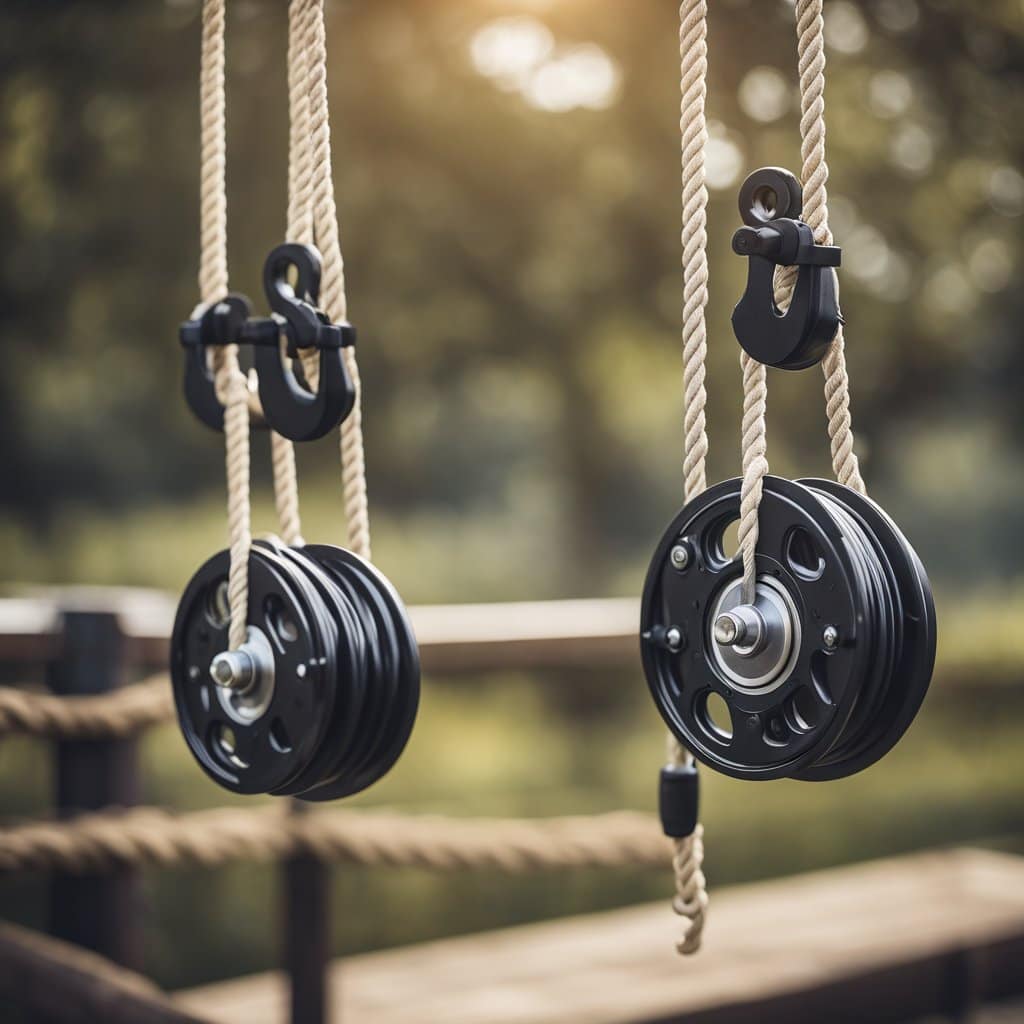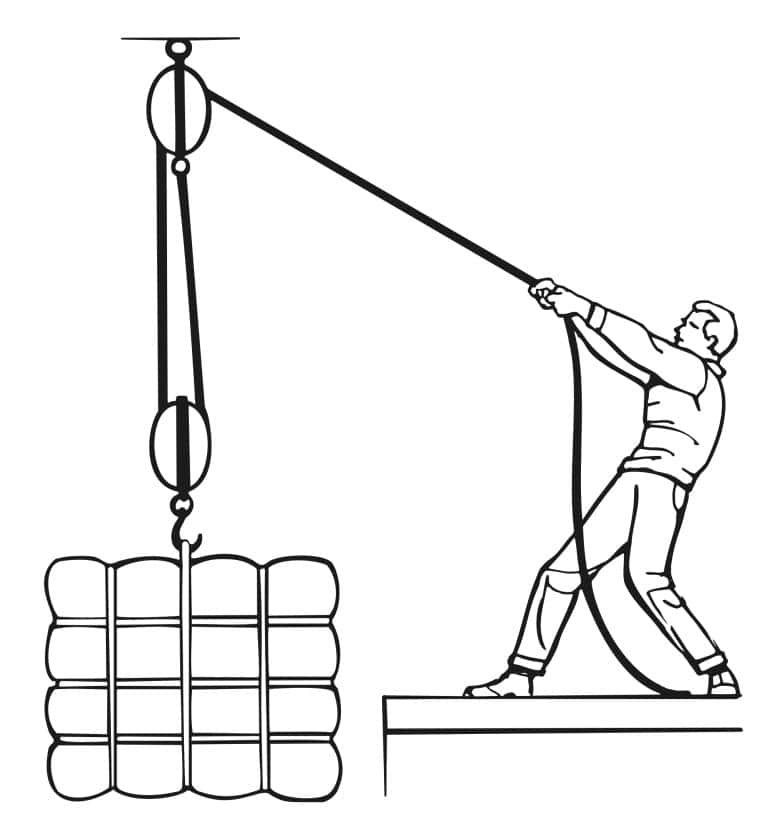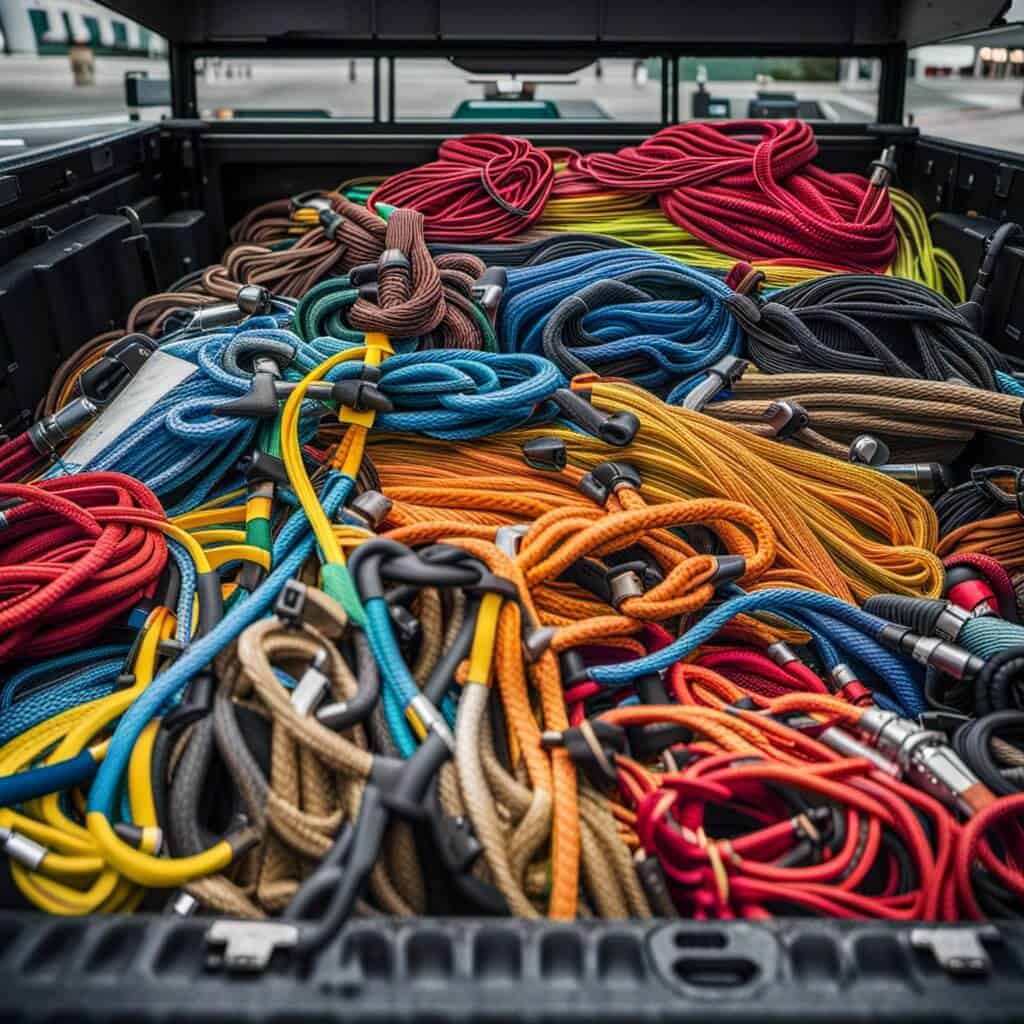Block and tackle systems are widely used in everything from construction to sailing. These systems consist of multiple pulleys and ropes that work together to lift or move heavy loads. When choosing the best rope for a block and tackle, the type of material, diameter, and strength are all essential aspects that can affect the rope’s durability, flexibility, and weight capacity. Additionally, the rope’s stretch, abrasion resistance, and UV resistance can also play a crucial role in its suitability for specific applications.
Table of Contents
Best Rope For A Block And Tackle
Whether lifting heavy loads on a construction site or hoisting sails on a boat, choosing the suitable rope for your block and tackle system is essential for optimal performance. To ensure that you select the appropriate rope for your block and tackle system, consider the load’s weight, the system’s configuration, and the environment in which it will be used. For example, a system used in a marine environment may require a rope resistant to saltwater and UV rays, while a system used in construction may require a rope that can withstand heavy loads and abrasion.
The material of the rope is an essential factor to consider. The most common materials used for ropes are nylon, polypropylene, and polyester. Nylon is the most durable and abrasion resistant but also the most expensive. Polypropylene is the most affordable but not as strong as nylon. Polyester is an excellent middle ground between nylon and polypropylene, offering a good balance of strength and affordability.
The rope’s diameter will affect the block and tackle’s strength and weight capacity. Thicker ropes are generally stronger and have a higher weight capacity but are much heavier and more challenging to handle. Thinner ropes are lighter, but they have a lower weight capacity.

The rope’s length must be based on the height of the object you need to lift, as having enough rope to reach the desired height is essential. However, only plan to have a little excess rope, as having too much rope can make the block and tackle difficult to operate.
The construction of the rope also affects its strength and durability. Look for ropes that are braided or twisted, as they are stronger. The rope’s strength is measured in pounds or kilograms, so ensure you choose one based on the weight of the object you need to lift. The best rule of thumb is to purchase a rope with double the weight capacity of the item you need to lift with the block and tackle to ensure the rope can lift the object. While the colour of the rope may not affect its performance, it can be helpful to choose a bright colour that is easy to see, especially if you are working in low-light conditions.
As someone who has worked with blocks and tackles for years, I know the importance of a suitable rope. Based on my experience and research, I have compiled a list of block and tackle systems with rope, taking into consideration stretch, abrasion, and UV resistance to ensure our recommendations suit various applications.

FITHOIST Block and Tackle 2200 lbs
If you’re looking for a heavy-duty pulley system that can lift heavy objects with almost 1/8th the force, then FITHOIST Block and Tackle is the perfect solution.
Pros
- The 7:1 lifting rate allows you to lift heavy objects with almost 1/8th the force.
- The reinforcement design at the sides of the pulley prevents the block and tackle pulley system from twisting and side-bending during use.
- The 4 x pulleys are more durable and load-bearing than a triple pulley set, with a breaking strength of 4400LBS 2 T, making them suitable for towing general household cars.
Cons
- The rope quality needs to be better.
- The plates are knife-sharp, a concern where the pull rope exits (potentially at an angle) and might chafe.
- The pulley twists when operating, which can be disappointing.
I recently used this product to lift a motorcycle, and I was amazed at how easy it was to lift it with almost 1/8th the force. The reinforcement design at the sides of the pulley prevented the block and tackle pulley system from twisting and side-bending during use, making it a reliable and durable option.
One downside is that the rope quality is not up to the mark, and I had to purchase a better 3/8″ rope separately. Also, the plates are knife-sharp, which is a concern where the pull rope exits (potentially at an angle) and might chafe—additionally, the pulley twists when operating, which can be disappointing.
If you’re looking for a reliable and durable pulley system that can lift heavy objects with almost 1/8th the force, then FITHOIST Block and Tackle is a good option.
YATOINTO Rope Pulley Hoist
If you’re looking for a heavy-duty block and tackle system that can easily lift heavy and light stuff, the YATOINTO Rope Pulley Hoist is a great choice.
Pros
- The rope is made of nylon, which ensures it will not fray or break. It is also resistant to UV radiation and will not fade.
- An 8:1 ratio of lifting power can do all the work without electricity or help, minimizing the work involved in lifting to 400 lbs.
- A wide application range is suitable for hunting, boating, lifting, garage work, pets, tree cutting, didactics, and many more uses.
Cons
- The rope is poly, not nylon, as advertised.
- The 65 ft rope may need to be longer for some applications.
- The pulley plates holding it together are sheet metal, which may not be as durable as other materials.
I recently used this hoist to lift some heavy items in my garage, and it worked like a charm. The 8:1 ratio lifting power made it easy to lift even the heaviest items without much effort. The nylon rope was solid and durable, and the rust-proof zinc-plated housing with nylon-rollers forged sling hooks resisted rusting and wear and tear.
One downside is that the rope is poly, not nylon, as advertised, which was disappointing. The 65-foot rope is too short for some applications, so measure before purchasing. Finally, the pulley plates holding it together are sheet metal, which may not be as durable as other materials.
Overall, the YATOINTO rope pulley hoist is a good choice if you are looking for a block and tackle system that can handle a wide range of lifting applications.
XSTRAP STANDARD Heavy Duty Rope Hoist Pulley System
The XSTRAP STANDARD is an excellent option if you are looking for a heavy duty rope hoist pulley system. It is perfect for sportspeople, hunters, boaters, and DIY enthusiasts. With a 2000 lb. breaking strength and 1000 lb load capacity, this rope hoist pulley system can easily lift heavy objects.
Pros
- This metal wheel block and tackle system is zinc plated steel, making it durable and resistant to wear and tear.
- The soft loop, strong, and long lasting polypropylene rope is protected by a plastic shell that prevents tangles.
- The 5:1 ratio lifting power of the manual hand rope hoist makes it easy to lift heavy objects single handedly.
Cons
- The sling straps are small.
- The rope has a certain amount of stretch, which may be better for some lifting applications.
- The rope with the product is rated for 1000 lbs, so you may need to purchase a stronger rope separately.
I recently used this product to lift heavy objects in my garage, which worked great. The block and tackle mechanism did most of the work, and I could lift heavy objects easily. The soft loops with the product are also a great addition, making it easy to attach the rope to the object you want to lift.
The block and tackle system is durable and resistant to wear and tear. I have used this product several times, and it still looks as good as new. The plastic shell that protects the rope also prevents tangles, which is a great feature.
Overall, I recommend the XSTRAP STANDARD Heavy Duty Rope Hoist Pulley System to anyone who needs to lift objects to 1000 lbs. It is durable, easy to use, and comes with everything you need to get started.
KITUYOTO 1100Lbs Pulley System for Lifting Heavy Objects
If you want an efficient and reliable block and tackle pulley system, consider the KITUYOTO 1100-lb Pulley System for Lifting Heavy Objects
Pros
- The pulley system is comprised of heavy duty pulleys and strong ropes that can easily handle up to 4,400 lbs.
- The lifting power ratio 7:1 allows you to lift weights with 1/8 of the force and lift heavy objects easily with one hand.
- The rope hoist shell and hooks are made of galvanized steel for high strength and rust resistance, while the rope is made of high strength tensile polypropylene material with a breaking strength of 4400 lbs, ensuring that it will not wear out in long term use.
Cons
- The mechanism components could have a more robust feel.
- The pulley ratio makes it possible to lift 1100 lbs, but the pulleys didn’t move very easily, so you were overcoming the resistance along with the load.
The reinforcement design of the side of the block and tackle can effectively prevent the block and tackle pulley system from twisting and side bending during use.
The four-pulley system is more load bearing and durable than a three block hoist pulley system.
XSTRAP STANDARD Heavy-Duty Reflective Rope Hoist Pulley 1 Ton Wheel Block and Tackle System
If you are looking for an easy-to-use and cost-effective rope hoist pulley system, then the XSTRAP STANDARD Heavy-Duty Reflective Rope Hoist Pulley 1 Ton Wheel Block and Tackle System is a great choice.
Pros
- Made of zinc-plated steel, which helps the system avoid wear and tear, the safety hooks safely hold the hoist in place.
- The pulleys have ball bearings, so the system has nearly no friction.
- The manual hand rope hoist has a 5:1 lifting power ratio, making lifting even heavy objects single-handedly easy.
Cons
- The rope you may wish to trade out. It may thin out and even break some fibres when you tighten it to lift something heavy.
- The hoist is not intended for heavy duty use.
- It would help to ensure all nuts and bolts were secure before using the hoist.
I recently used the XSTRAP STANDARD Heavy-Duty Reflective Rope Hoist Pulley 1 Ton Wheel Block and Tackle System to lift a 120-lb box easily with little effort. The hoist is compact, making it easy to store and transport. I also used it to lift boxes overhead, and it fit the bill perfectly. It is no-frills, but that is what I wanted as I use it only a few times a year. Just check all the nuts and bolts before using them, and avoid using them for heavy-duty purposes.
Final Thoughts
When selecting the best rope for a block and tackle system, consider the load’s weight, block and tackle configuration, and environment of use. The rope’s material, diameter, length, and construction all play a part in determining its suitability for specific applications. Choose a rope that balances durability, strength, and affordability.
Frequently Asked Questionsmaine
What are the different types of rope constructions?
There are three main types of rope constructions: twisted, braided, and kernmantle. Twisted rope is made by twisting multiple strands of fibres together. Braided rope is made by braiding various strands of fibres together. Kernmantle rope is made by braiding a core of fibres and then covering it with a braided sheath. Each type of construction has its advantages and disadvantages.
Which type of rope material is the strongest?
The strength of a rope depends on its material, construction, and diameter. Some of the most robust rope materials include Dyneema, Spectra, and Kevlar.
What is the best rope for tie-downs?
The best rope for tie-downs depends on the application. A strong, durable rope such as nylon or polyester is recommended for general-purpose tie-downs. A rope with a protective coating, such as polypropylene or polyester, is recommended for tie-downs that require resistance to abrasion, UV rays, and chemicals.







